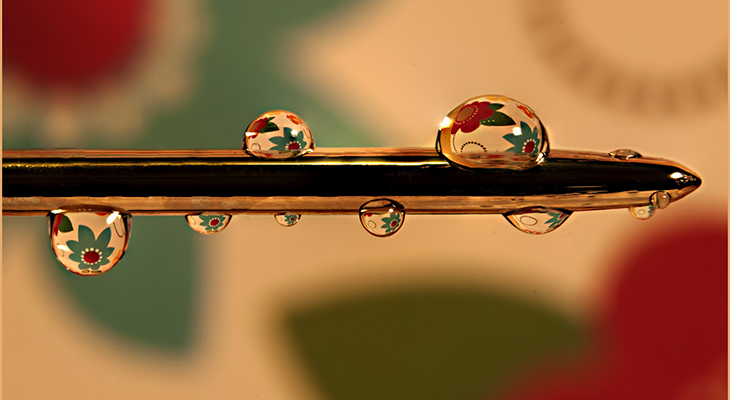Researchers Are Developing Shape-Shifting Fluid Robots

Image credits: rexboggs5 via Flickr
(Inside Science) -- By using fluids similar to Silly Putty that can behave as both liquids and solids, researchers say they have created fluid robots that might one day perform tasks that conventional machines cannot.
Conventional robots are made of rigid parts that are vulnerable to bumps, scrapes, twists and falls. In contrast, researchers worldwide are increasingly developing robots made from soft, elastic plastic and rubber that are inspired by worms, starfish and octopuses. These soft robots can resist many of the kinds of damage, and can squirm past many of the obstacles, that can impede hard robots.
However, even soft robots and the living organisms they are inspired by are limited by their solidity — for example, they remain vulnerable to cutting. Instead, researcher Ido Bachelet of Bar-Ilan University in Israel and his colleagues have now created what they call fluid robots that they say could operate better than solid robots in chaotic, hostile environments. They detailed their findings online Jan. 22 in the journal Artificial Life.
The researchers experimented with so-called non-Newtonian fluids. Water acts mostly like a Newtonian fluid, meaning the degree to which it resists flowing — its viscosity — generally stays constant regardless of the mechanical force applied against it. In contrast, the viscosity of a non-Newtonian fluid can vary depending on the rate that mechanical force is applied against it. For instance, the non-Newtonian fluid Silly Putty can flow like a viscous liquid but also snap or bounce like an elastic solid.
Suspensions — that is, liquids with particles mixed into them — are often non-Newtonian fluids. For example, when water is filled with starch particles, it becomes a doughy substance known as oobleck that acts solid if you run across it but liquid if you stand still on it.
After testing a variety of non-Newtonian fluids, Bachelet and his colleagues developed prototype fluid robots made of blobs of starch grains suspended in a sugary solution. Sound waves from audio speakers underneath the surface where the blobs rested helped control their mechanical properties, and depending on the volumes and frequencies of the sounds, the researchers could make the blobs move.
The scientists could make the fluid robots drag metal items more than five times their weight. The blobs could also change shape, split into smaller blobs that could be controlled individually, merge to form larger blobs, and drip through gratings. These qualities suggest that fluid robots might find use in search and rescue missions, dripping into otherwise unreachable places and merging at their destinations to carry weights and perform work, the researchers noted.
"It's really novel — it's a robot that basically doesn't have any parts," said mechanical engineer David Hu at the Georgia Institute of Technology, who did not take part in this research.
The blobs could even be made to "count" up to three, Bachelet and his colleagues said. When they absorbed aluminum oxide, they became more rigid, and after they engulfed three dough packets laced with aluminum oxide, they became too stiff to move.
The scientists suggest that fluid robots carrying chemical payloads could interact and perform chemical reactions. Potential applications might include multiple fluid robots working together in an assembly line to synthesize compounds or break down waste, they said.
The fact that these blobs need to rest on sound-generating platforms to move is an obvious limitation, Bachelet and his colleagues admitted. However, the researchers said that future research could likely extend the concept to new control methods. For instance, sound beams could steer these blobs from a distance, they said. Moreover, using magnetic or electrically charged fluids could lead to fluid robots that could also be steered with magnetic or electric fields. Combining multiple techniques of control might lead to very elaborate and capable designs, they added.
Bachelet and his colleagues suggested that fluid robots could be given coatings much like those protecting cells, which could prevent incidental mixing and reduce water loss from evaporation. "In this regard, fluid robots could show unexpected similarities to primitive life forms," they wrote in their paper.
The researchers developed their fluid robot designs through trial and error, since the physics underlying non-Newtonian fluids is still not well understood. They suggested further research into fluid robots could in turn help scientists better understand non-Newtonian fluid behavior.
"Overall, I think the concept of fluid robots is exciting," said roboticist Michael Tolley at the University of California, San Diego, who did not participate in this work. However, he noted that in order to classify a machine as a robot, most researchers would require it to have the ability to make decisions by itself. "We are a long way off from addressing the tough challenge of designing a fluid that is able to think and act autonomously," Tolley said.

